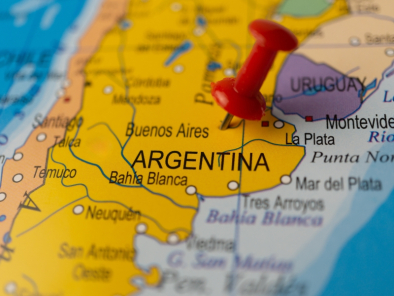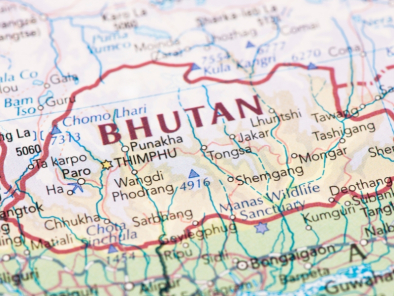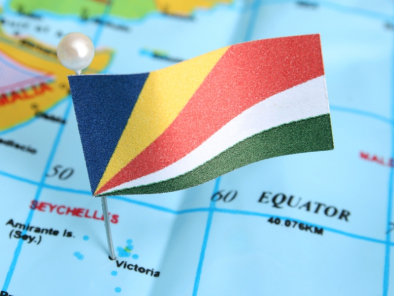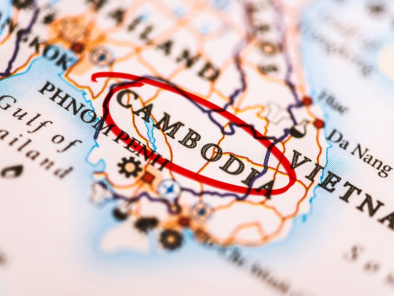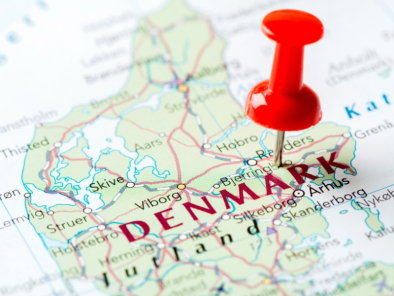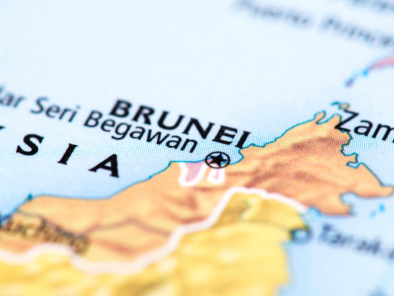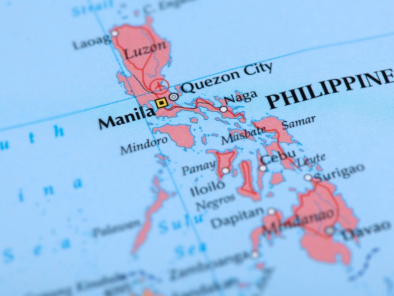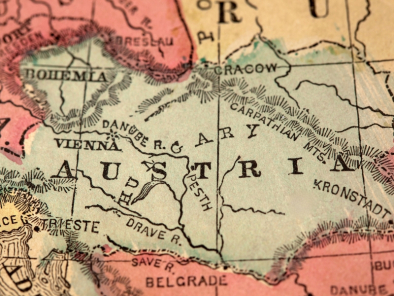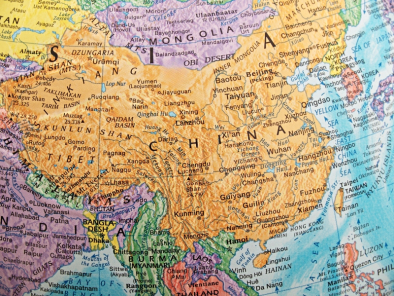ARGENTINA
Argentina is a territory that defies a single definition. It has the
power to amaze or exasperate, but it is never less than fascinating.
From the sub-tropical jungles and steamy falls
of Iguazu to the frozen
Antarctic waste of Tierra del Fuego, that one territory can contain so much diversity defies
belief. This diversity is reflected in the enigmatic but colourful Argentine
people.
However, strange as it may seem at first, after a few days it all seems to make
sense. Why sleep at night when you can sleep during the day and party all
night? It's not all tango either, visit Buenos
Aires and you'll find a city capable of rivaling any
other in the world for the range and variety of entertainment on offer.
But to come here just to sample city life, no matter how unique a city Buenos
Aires is don't miss out on the rest of the country. In its northern reaches and
the far-south Argentina has
two of the world's greatest natural wonders - the Iguazu falls, larger than Niagara, and the Moreno Glacier, one
of the world's few growing ice-fields. In between there is a veritable wealth
of history mingled with nature. The colonial towns of
early Spanish rule remain relatively untouched, while in the shadow of the Andes, high on the puna, you can find a way of life
that pre-dates even these centuries-old invaders.
It all goes towards understanding the country's immeasurable romanticism, where a street kid from Buenos Aires can become the
world's greatest footballer, and throw it all away again, and an actress can
capture the heart of a nation. Come and fall in love for yourself.
Visa: The visa is to be obtained prior to arrival in the country
Climate & When to Go
Climates
range from hot and humid in the north to cold and rainy in the south. In
northern Argentina,
summer days will be in the 33-37 C and nights in the 23-27 C (winter highs in
the 15-22 C and lows in the 5-10 C). Tierra del Fuego, at the southern tip of Argentina, is
almost always cold and/or rainy, with summer highs in the 10-21 C and
temperatures well below freezing in the winter.
Generally,
the best time to go is October-April (remember that the seasons are reversed
from the Northern Hemisphere). To lie on the beach, go December-March; to ski,
go July-October.
Argentina's vast territory and variations in terrain from coast to
mountain means that there is a large variation in climate depending on where
you go in the country.
Most people arrive in Buenos Aires and around the capital as well as in the Northeast the
climate is more or less sub-tropical. Humid throughout the year the region is
characterised by abundant plant growth and high temperatures. The Pampas enjoys a climate more continental in character.
Warm summers (Oct-Mar) combined with cold winters are ideal for agriculture and
cattle rearing.
The high plateau of the Andes to the west and north is less hospitable. At
an average elevation of over 4,000m, vegetation is sparse and, although the
climate is hot through summer days the temperature at night consistently drops
well below freezing. In winter the region is snow-covered and bitterly cold.
Patagonia further south is similarly a rocky land, characterised by
a huge diurnal change in temperature and frequent high winds throughout the
year.
Tierra del Fuego at the southern tip of the continent endures a sub-arctic
climate. Permafrost in higher areas and glaciers produce a bleak but
fascinating landscape. Temperatures are always low, averaging a little higher
than 10 degrees centigrade in summer and permanently below freezing in winter.
Peak periods for visitors vary by region, Buenos
Aires with its year-round warmth could comfortably be
visited at any time, but is probably best seen in the shoulder months, October-November
and February-March when the temperatures aren't at their peak. If
you're heading for the beaches only the peak months of December-February are
really hot enough. In the interior Patagonia and the Andes
are at their most hospitable in the December-February period, although even
then the temperature can drop below freezing at night.
Transport
Taxis - Taxis are black and yellow. Available ones have a
red light on the front, and the fare is metered.
Rail: Service is good to the suburban areas, but it is not
recommended for longer distances.
Subway: Five lines connect the city, all of them safe and fast. Service
is punctual.
Take note of the nation's public
holidays when transport plans can be affected, with more traffic on
the roads or a reduced public transport schedule. Although the train network is
one of the world's longest with over 40,000km of track, in practice much of
this is made up of local and suburban lines and travelling around Argentina
long-distance by rail can be difficult.
You should note that the train network has been grossly underfunded in recent
years, and although rail transport is cheap the facilities are not always up to
scratch. Outside of Buenos Aires
you may find it difficult to navigate the railway or plan reliable timetables.
It's worth keeping your eye on the national news if using the train (or any
other type of public transport in fact) as strikes are not infrequent and seriously
disrupt travel schedules.
From Buenos Aires several routes spoke out to
major destinations around the country on half-a-dozen mainlines, including to Cordoba (via Rosario), Mar del Plata and Bariloche (via Bahia Blanca). Depending on destination
however, it may be quicker to go by coach and you are advised to check this
before booking your tickets if speed is a priority. Sleeper cars are available
on long distance journeys and should be booked in advance at the ticket office.
The Argenpass is available from train stations and allows unlimited
travel on the network for a designated period of 1-3 months.
Tourist trains such as the Train into the Clouds and the Train at the
end of the World remain extremely popular. The Old Patagonian Express is
a completely steam powered railway through the most spectacular part of the
nation and is deservedly counted among the world's great train journeys.
By Bus
Coach travel is one of the best-developed means of
transport in the country - mainly because there is a permanent demand from
locals for it. From Retiro Bus Station in Buenos
Aires you can catch a coach to anywhere in the
country. Private companies operate various routes, and prices vary according to
facilities on-board and the type of seat you require.
If planning to travel by coach take into account that given the enormous sizes
of the country journey times can be very long. For example a trip to Patagonia from the capital can take over 24 hours.
By Car
Although having a car in Argentina has some appeal owing to
the sporadic public transport system you have to take a couple of factors into
account.
Points to consider:
First
of all the distances can be huge, and unless you're travelling with
another driver you may find it hard to safely and speedily cover the country.
The
following table provides approximate distances between Buenos
Aires and major cities and locations throughout Argentina and
its closest neighbours. Kilometres in the left of the table, Miles in the middle
column. Owing to the vast distances involved in travelling across Argentina by
road the third column shows approximate flight time
for
the same journey. (*no direct flight)
By Air
International flights arrive at Ezeiza, about 40 minutes by taxi
from downtown Buenos Aires.
Domestic arrivals land at Aeroparque Jorge Newbery, 10 minutes from downtown by
taxi,
Major carriers include: Aeroflot, Avinaca, Aerolineas Argentinas, Air France,
American Airlines, Alitalia, Aeroperu, Austral, British Airways, Canadian
Airlines, Dinar, Iberia, KLM, Lan Chile, LAPA, Lloyd Aero Boliviano, Lufthansa,
Malaysia Airlines, Pluna, South African Airways, Swissair, TAM, United, Varig,
Vasp.
From Buenos Aires domestic flights
and flights to Uruguay
leave from the Jorge Newbery airport, which is to the north of the city.
Flights connect to places such as Salta,
Ushuaia, San Salvador de Jujuy and Cordoba
among others.
Prices are very reasonable considering the time you save and the distance
traveled. Aerolineas is the national operator and although the economic
downturn has hit the airline hard it is still operating internal flights all
over the country. Tel: 0810-222-86527 from Argentina for flight information
and booking.
There is a departure tax payable at the airport of USD30.50
for international flights and USD2.50 for domestic flights (except Calafete,
where passengers must pay USD7 and Ushuaia, where they pay USD5).
At the moment, shopping in Argentina is much cheaper than a
few months ago due to the devaluation of the local currency. While dollars are
generally accepted, foreign currency can be exchanged in banks and authorised
bureaux if need be.
Culture
Everyone will tell
you that Argentine culture is the sum of a massive and varied influx of
Europeans, but if that's so it's certainly become much more than the sum of its
parts.
In its staunch Catholicism and outlook on
life it is distinctly European, and few places seem to value Siesta as much as Argentina.
The other over-riding passion of the nation is football, almost
displacing religion in people's priorities on occasion. Perhaps the greatest
exponent of this particular sport sums up the country better than any other. A
kid from the streets of Buenos Aires, Maradona
was the finest player of football that ever graced the world stage, through the
1980s he turned soccer into an art form, and is revered more highly than anyone
in Argentina
today. Yet Maradona, as well as being the finest player in the world was also
the most vicious perpetrator of the worst side
of the
game. He persistently cheated, complained and fouled, and in the final stages
of his career was found to be using drugs. But this matters not to the
Argentine people. They value beauty above all else and can forgive any number
of flaws if the person committing them has charisma and charm - forgiving
Maradona's transgressions as merely a precocious cheek that comes with
prodigious talent.
The culture is also extremely machismo, with the epitome being the swaggering
Gaucho cowboy, with his
knife tucked into his broad belt. What would be considered offensive in many
countries is seen as merely boyishness here, although at the same time something
of a matriarchal society persists with the eldest
female often being the most deferred to person in family groups.
Dos and Don'ts
Feel comfortable smoking in almost any
public place. In some bars there is a division between smokers and non-smokers,
but these norms are not socially nor legally respected.
Chat to your hosts.
They adore speaking with foreigners about soccer, family and just about
anything else. They also love to hear foreign accents speaking Spanish, a
source of seemingly endless amusement.
Do not
take regular taxis in the street.
Call to ask for a "radio taxi" or to a "remise". There are
plenty of these companies in Buenos
Aires. In the provinces, you can trust a little bit
more in common cabs.
Do not ask for
help or for directions to anyone in the street. You can be
"betrayed" by your accent in Spanish or just by speaking English and
thieves can identify you as a possible victim.
Don't be over-formal when greeting.
People generally kiss one cheek (even between men) or they shake hands if there
is a business relation between both persons or if there is a big age difference
between them. Women are almost always kissed on one cheek.
Shopping:
The favourable exchange rate means that it is
worth browsing the stores of Argentina's
main cities for international branded goods. Wander down Buenos
Aires's Calle Florida
and Ave Santa Fe for the most upmarket stores in the country. Although the
selection is unlikely to be anything different from back home the prices can be
significantly less and you can obtain real bargains. The Sunday Flea Market in
San Telmo provides excellent, leisurely people-watching and shopping, and there
is a very good Sunday Antiques Fair at the Plaza Dorego.
The best things to buy remain the traditional crafts that Argentines have made
for centuries. Throughout the country you'll find fabulous leather work from
bags, belts and accessories all the way to full coats. Of course besides this
traditional merchandise you could always purchase an icon of modern life in an Argentine football shirt. The distinctive pale blue and white stripes are the most
famous colours in football, besides the yellow of Brazil. The most famous number is
"10" - Maradona's.
Opening Hours: Stores in the large cities will open from 09h00 to 20h00
every weekday. In more rural areas and smaller towns shops may close for an
extended time from 12h00, and re-open later for the evening trade. Most shops
will close at around 13h00 on Saturdays. Sunday opening is not practised.
Tax Refund:
A VAT of 21% is added on to the price of most
goods and services in Argentina.
Tax can be reclaimed on any purchases over USD70 in value. The amount must be
covered on a single invoice from a store that participates in the Global Refund
scheme. You have to prevent the appropriate receipt (which displays the amount
of tax paid) and the goods at a global refund desk at the point of
international departure. The refund can then be processed and sent to you, or
re-credited into your bank account.
Food
Argentineans love
to eat and to cook. You can find a range of European, Asian, and Indian
restaurants throughout the country, besides the more expected offerings from
South and Central American cuisines, including Brazilian, Chilean, Mexican, Caribbean and Peruvian.
Specialities
Locro:
A stew made of meat, potatoes, corn and sundry other vegetables. It is
generally a winter dish.
Empanadas:
filled with ham and cheese, corn, spinach, onion and cheese, prunes and ham,
pineapple and ham, chicken, tuna fish or indeed just about anything you can
stuff in them.
Asado:
The traditional Argentine barbecue
Milanesas:
Thin veal, beef or chicken steak cuts, covered with seasoned breadcrumbs and
fried fillings.
Dulce de Leche: It is like a jelly but made out of cooked
sweetened milk - and it is very, very sweet. Argentineans use it as a topping
on cakes, pancakes, pieces of toast, cookies... literally everything.
Chocolates: Chocolate is extremely popular and is of as high quality
as you can find anywhere in the world. In Bariloche city, Argentina's
chocolate capital, you can choose between 130 varieties of chocolate and you
can even have chocolate fondues.
Drinks
The Argentineans predominantly drink local wine with
main meals. You can choose between "tinto" (red), "blanco"
(white) or "rosado" (rosé). The most popular brand is Quilmes although there are others throughout the country -
such as the Cordoba
label.
Currency:
Argentinian Peso (ARS). ARS1 = 100 centavos
Notes: ARS100,
50, 20, 10, 5 and 2
Coins:
ARS5, 2, 1 and 50, 25, 10, 5 and 1 centavos
Credit cards: Credit cards are widely accepted in large hotels and
restaurants. The most popular international cards such as American Express and
Visa will often be accepted in stores and smaller shops as well. If an
"old-style" credit slip with a carbon copy of your card is taken
ensure that you cross through the empty boxes in the "Total" section.
It has been known for additional figures to be added after the slip has been
signed.
Exchange The US Dollar is generally
accepted as legal tender, and you should carry this currency while in Argentina.
Other foreign currencies can only be exchanged in licensed banks and cambios.
It is heavily advised that you only exchange currency as and when you need it
as the Peso is extremely devalued and rates change on a daily basis.
Banks are open Mon-Fri
1000-1500. You should be aware that Argentina went through an economic
crisis between 1999-2002. Large amounts of money was withdrawn from the country
caused by the loss of confidence from investors.
Tax
Refund
A VAT of 21% is added on to the price of most
goods and services in Argentina.
Tax can be reclaimed on any purchases over USD70 in value. The amount must be
covered on a single invoice from a store that participates in the Global Refund scheme.
You have to present the appropriate receipt (which displays the amount of tax
paid) and the goods at a Global Refund desk at the point of international
departure. The refund can then be processed and sent to you, or re-credited
into your bank account.
Service
Charges Tips are not necessary but in
practice they are often offered and never refused. Some hotels or restaurants
will add 25 per cent service charge to the bill and waiters may still expect a
tip - it is to your discretion whether you offer one. Otherwise, ten per cent
on top of the bill will suffice. The same applies in bars. Taxi drivers tend to
expect tips from visitors.
Telephone
International dialing
code: 54
Area codes: Buenos Aires: 11, Cordoba:
351, Salta:
387, Mar
del Plata: 223, Mendoza: 261 Area dialing codes are preceded by 0
when dialing within the country.
Public telephones are both card and coin operated.
Health Concerns
Tap water
in cities and certainly in large hotels is safe to drink. Outside of main
population centers you should be more wary of drinking from the tap and use
bottled water instead. Never drink from a watercourse, A common complaint is stomach upsets,
and to minimise risk of contracting even this minor illness you should take
care to avoid eating unpeeled fruit or uncooked vegetables for at least a few
days after arrival.
Although medical facilities in Buenos
Aires and other cities are excellent they are also
very expensive. Medical
insurance is essential, and make sure it covers you for
activities such as rafting, climbing and hiking if planning on undertaking such
pastimes during your stay.
Vaccinations: None needed.
Personal Safety Argentina is
not as dangerous as many people think. Buenos
Aires has a reputation for violent crime, but any that
occurs is mainly confined to the suburbs and in the small towns of the province
rather than in the city centre. Nevertheless take care not to carry too many
valuables visibly while walking around the city. If driving, keep your car door
locked at all times. Car hijacking has been known to occur.
In the current political climate demonstrations, protests and even riots
have been occurring sporadically for some time. Avoid large gatherings of
people if you see them. Often the authorities make arrests of anyone they think
may be part of the demonstration. As with everywhere try not to carry anything valuable
or that you cannot afford to lose. With poverty rife in Argentina
foreigners are often perceived as wealthy, sometimes it's better to
deliberately give the impression you're not. If a victim of armed theft you are
advised to comply with your assailant rather than resist.
You should take great care if traveling in the mountain and plateau regions.
Even in summer the night temperature can drop well below freezing at altitude,
and you should ensure that you are equipped for such extremes of temperature.
The main hospitals in Buenos Aires
are the German Hospital,
Fernandez Hospital,
Clinica Suizo Argentina,
Clinica Bazterrica, Rivadavia Hospital, French
Hospital, Clinica de la Trinidad, and Italian Hospital. For emergencies, Asistencia
Medica SAME.
Emregency Numbers:
Police:100
Ambulance:101
Fire:100
BUENOS AIRES
The Argentine capital is at
once a traditional and avant-garde city. A sprawling place of nine million inhabitants,
Buenos Aires is most easily defined by its neighborhoods:
Buenos Aires is
also well known for its great soccer stadiums, tango music and dance (that can
be best listened to and viewed in the traditional Café Tortoni). The wide
selection of cultural institutions such as the recently opened Latin-American Museum of Art (MALBA)
shouldn't be ignored: this is very much Argentina's cultural capital as
well as being the seat of government. There is also a wealth of beauty and
history here, and no tourist can leave the city without visiting Palermo Park and the Plaza de Mayo, surrounded by
such symbolic buildings as the Cabildo
(town hall), the cathedral, and
the Casa Rosada, the
government's headquarters
Attractons
San Telmo where the visitor can buy antiques in a market
surrounded by colonial style buildings. Then there's elegant Puerto Madero and
La Boca where the first Genoese immigrants settled in red, blue and yellow
houses along picturesque Caminito Street.
Teatro Colon
The Teatro Colon needs little introduction to those familiar with
the opera. As one of the world's premier opera houses, it has hosted the likes
of Maria Callas, Toscanini, Stravinsky, and Caruso. Tickets are hard to come
by, as many of the theater's 3,500 seats are held by season ticketholders. A
guided tour lets the visitor glimpse the inner workings of this eminent center
of opera
Plaza de Mayo
The Plaza de Mayo is the city center (the city, in fact, was literally built
around it), some of Argentina's
most important historical events took place here. Surrounding it is the
Government House, the Metropolitan Cathedral, and the Cabildo (town hall).
Today the Plaza probably owes most of its fame to the Madres de la Plaza de
Mayo, the women who still show up in the square seeking information on the
deseparecidos, their loved ones who vanished during the DirtyWar.
The Recoleta
This area is the most fashionable place in Buenos Aires to dine; it is adjacent to the
Cementario de la Recoleta, Eva Peron's final resting place. Along with Evita's
much-visited grave, there is Our Lady of the Pilar
Church, the Cultural Center,
and the Palais de Glace, a major gallery. You can walk along the Pilar, which
brims with a wide variety of restaurants and venues featuring live music every
night.
San Telmo
San Telmo is widely hailed as the most picturesque part of Buenos Aires. Cobblestone streets and
colonial buildings set the atmosphere for an array of shops and boutiques,
tango parlors and cafes.
La Boca
Perhaps the most colorful area in Buenos
Aires is La Boca (the Mouth), which sits along the
port. Here an assortment of brightly painted low houses made of wood and metal
burst upon the eyes in a scene that could almost be from some- where in Scandinavia. The main street here is Caminito, which has
an artisans and painters fair, open air tango shows, and typical Italian
cantinas. Tip: For security reasons, avoid La Boca at night, and do not stray
from the tourist areas.
The Parque Lezama
This is one of the city's most attractive parks--enormous magnolias, palms, and
cedar elms grace the winding paths among the hills, and a smoothly-flowing
river cuts through the park center. At the Museo Historico Nacional, Argentina's
turbulent history is reviewed, from the 16th century to the present. It
features a collection of paintings by Candido Lopez, a primitive stylist and
one of Argentina's
most important artists. The Catedral Russo Ortodoxo, with its soaring and
majestic onion domes, is one of the city's many fine architectural ornaments.
Curiously enough, it is still owned by Russia.
Palermo
Palermo
is area of woods and lakes, on large park composed of many small ones.
Among the attractions are a pleasant rose garden filled with sculptures, polo
fields, and the Japanese
Garden.
Tigre
Situated on the Parana River Delta, Tigre
is a natural playground consisting of 350 rivers and streams and an ecological
reserve. You can partake in water sports and fishing, or check out crafts at
the Fruit Dock. There are also two museums here, the Navy Museum
and the Sarmiento.
Estancias
A great excursion from the city is a visit to one of the many Estancias, or
Argentine ranches. Here you can get a sense of the traditional life of the
gauchos. Many Estancias offer accommodations, traditional food, live folk music
and dancing, and exhibitions of gaucho horseback skills.
CORDOBA
Argentina's second city, Cordoba
is less frenetic than the capital to the south-east. At the heart of the wide
northern part of the country, in colonial times the city rivalled Buenos Aires as the
administrative and government centre. In the 17th century Cordoba was arguably the more important of
the two, and the architecture that survives from this period indicates the
wealth and influence the city possessed. The colonial buildings of the
historical quarter are the grandest found anywhere in Argentina, and have been preserved even as Cordoba's political
importance has declined. Highlights include the cathedral (built in 1574),
Cabildo
The Cabildo
(the town hall dating from1588) and Argentina's oldest university.
The first site is the Town Hall, built
by the marquis Sobremonte.We recommend visiting the subterranean cells and the
so-called"Salon Rojo" (Red Room). Often there are concerts in the
"Patio Mayor" (Main Courtyard) and art exhibitions.
A few steps ahead stands the Cathedral, which was initiated in 1574 and wasn´t finished until two
centuries after. The result was a mixture of styles, unified by the
monumentality of the work.
Opposite these two buildings is the plaza "San
Martin", built in 1577. The plazas lovely gardens date
back to the second half of the 19th century. The central monument, dedicated to
the general San Martin, was inaugurated in 1916. Next place to see is "Museo de Arte Religioso Juan de Tejeda" (Museum of Religious Art Juan de Tejeda), the only one of
its kind in Argentina.
The museum exhibits the valuable collections of religious art that belonged to
the cathedral long ago.
Nearby there is the pedestrian zone Obispo Trejo, where you can admire interesting 19th century
constructions. You must make a stop at the "Universidad
Nacional de Cordoba", which is the first university the country has seen, and
its Main Library with priceless incunabular books.
Next to the university you will find the Compañia
de Jesus Church, with a certain aspect of a medieval fortress,
consecrated in 1671 and considered the oldest in Argentina.
The San Martin Theater, the oldest in the country, was inaugurated in 1891 and
has an excellent acoustic.
Marquis of Sobremonte
Provincial History
Museum
(Museo Histórico Provincial Marqués de Sobremonte) Besides this rich
history Cordoba
also possesses several cultural institutions that count among the country's
best. Its 26 rooms contain a collection of artefacts from colonial and
post-colonial days in the region. The city is also a centre for the performing
arts - the San Martin
Theatre is Argentina's oldest, inaugurated in
1891. It still plays host to drama, dance and orchestral performances.
Atlantic Coast Although it's rarely the first place that people think of
for a beach holiday Argentina's thousands of kilometers of coast contains
several world class beach resorts.
The city of Mar
del Plata, in the province
of Buenos Aires, is the most popular
beach resort in Argentina.
Located south of the capital it is just one in a series of resorts that cover a
vast swathe of the coast. The town itself is pleasant enough and the landscape
varies between beautiful beaches and fabulous coastal scenery such as the Barranca de los Lobos
sea cliffs. The 19th-century lighthouse at Punta
Mogotes is something of an icon, visible from miles
away along the coast.
Other resorts to consider include Mar de Ajo, Miramar,
San Bernardo,
Santa Clara del Mar, and Santa Teresita. The summer months of November-February
are best for visiting Resorts
And also nightlife in Córdoba has many
cultural and entertainment alternatives. It's a city to be fully enjoyed.
THE PAMPAS
The Pampas
West of Buenos Aires the plains of the Pampas cover a vast swathe of Cordoba, Santa Fe and Buenos Aires provinces. It
is a magical expanse of incomprehensibly wide open spaces and an unbroken
horizon. This is also the land of the gauchos, the legendary Argentinean
cowboys that epitomise the machismo culture of the country. La Pampas, in
the centre of Argentina,
is the largest and best-known area. A land of lush plains it is the country's
centre in terms of population, industry and agriculture. Towards the south,
there is the sterile and stony plateau of Patagonia, swept by the wind during
most of the year. The tiny piece of Tierra del Fuego that belongs to Argentina is on
the east side of the continental tip. It contains the world's most southerly
city Ushuaia.
The territory contains several attractions of note. One of the best ways to
experience the Pampas is to stay at one of the colonial style ranches, which
still farm cattle in the traditional gaucho way. Tourists are invited to sample
the life of a Pampas cowboy, with gaucho style
barbecues and traditional activities of horse riding, hunting and fishing.
Mar del Plata
The classic beach resort town in Argentina, Mar
del Plata has everything. It gets very busy and
crowded in the summer months. If you prefer quieter deserted dune beaches, look
around the area for a larger variety of beach options like Pinamar.
San Antonio de Areco
The heart of traditional Argentinean and gaucho culture, this town
greatly values Argentina’s
history and explains it to the visitor, and has many estancias for tourists to
stay in. November 10th is the “Dia de la Tradicion,” a holiday celebrating
traditions, and is both a lot of fun and educational. If you prefer to be in a
more rural setting, look into the variety of estancias to see las pampas
firsthand.
Elsewhere in the Pampas you can visit the salt lakes with
their populations of bright pink flamingos or head for the National Park of Liahué
Calel where other indigenous wildlife can be seen
- including pumas, the large wild cat of the plains. A magnificent national
park, unfortunately somewhat difficult to access without a car, it is
interesting both in terms of its wildlife and ecosystems, and in terms of its
archeological sites.
Other places of interest include the pilgrimage
city of Lújan and
its magnificent basilica that houses the tiny statue of the Madonna; site of
many recorded miracles over the centuries. Further north you should also visit Rosario with its pristine colonial architecture.
Go Gaucho:
Staying at an estancia, horseback rides are also obviously
available, and some estancias even offer multiple day excursions, camping in
the pampa and living the way gauchos did in the past.
Iguazu Falls:
The Iguazu
Falls are inarguably one
of the world's natural wonders. Surrounded by dense jungle vegetation and
incredibly varied fauna and flora, the Iguazu River
divides into 275 separate channels, which plunge over the lip of a horseshoe
over three kilometres in length. At their highest point the water plummets over 70 metres into the basin below. With literally thousands of gallons
crashing down each second the noise is deafening and can be heard a long time
before you actually see the falls for yourself. As the water reaches the bottom
the spray rises and the sunlight forms numerous rainbows.
In the midst of verdure foliage, Iguazu
Falls Argentina
is located 17 km to the southeast of Puerto Iguazu. Argentina Iguazu
Falls is an ideal place
to explore nature and its pristine glory. With around 275 cascades making up
the one majestic waterfall, the major highlight of Iguazu Falls
is the crescent-shaped Devil's Throat. Argentina Iguazu
Falls is located within the Iguazu National
Park.
In Guarana language, the Iguazu Falls
means 'big water'. Falling on the border of Argentina
and Brazil,
the falls beckon adventure enthusiasts to witness the churning white noise with
the breathtaking backdrop. An ideal time to visit the Iguazu
Falls in Argentina is in between August and
November. The falls form the border of three countries, Argentina, Brazil
and Paraguay and are
encompassed by the Iguazu National
Park. The
surroundings are almost as much of a tourist draw as the falls themselves and
you can bathe in the warm water of the river and enjoy spotting the myriad
fish, insect and mammal life that has made its home in this unique eco-system.
Many of the inhabitants are threatened species and you'll be very fortunate to catch a glimpse of
some of the rarer large animals such as the giant otter or the
jaguar.
The Iguazu Falls in Argentina
have an access with a Visitor Center
where tickets are sold.. The ticket includes two train and a boat ride that
crosses over to the San Martin Island.
To get to the main gate, there is a bus service running every 45 minutes from
different points of Puerto Iguazu: downtown, Hito Tres Fronteras
(main area of Puerto Iguazu hotels), the Bus Station and Ruta
12. The bus is about approx USD 2 per person each way.
Once inside the Iguazu Falls
Park you can hire
bilingual guides or make the tour on your own. The are closest to the Visitor Center
comprises a patio with restaurants, souvenir shops, an amphitheatre and a space
dedicated to the Park´s ecosystem. There is also an exhibition of natives who
lived in the area during the past centuries. The exhibits are in Spanish only.
The train terminal is at Central Station, some 400 mts
away from the main gate. Here is where the first leg starts and you can either
ride the train or take a 20-minute easy walk along Sendero Verde (green trail).
Both ways will get you to Cataratas
Station, the starting point of the Upper Circuit
The Upper
Circuit is a half-hour walk along a 1200 mts trail – with low
degree of difficulty and no stairs – that goes deep into the jungle. All of a
sudden, you run into breathtaking views of the Falls. You will get lots of
closer views at the different observation points, and more panoramic sights
toward the end of the trail (see Iguazu Falls pictures)
The Lower
Circuit requires more physical effort due to its stairs but it
can be perfectly done if you take it nice and slow, catching your breath on the
different viewpoints. On this trail you will also walk deep into the jungle,
crossing streams and coming across local fauna.
The Lower
Circuit goes all the way down to the river, where the boat
crosses over to San Martin Island.
On the way down, there are balconies with marvelous bottom-up views of the
falls (the same falls that you see from above in the Upper Circuit). If you
have any physical impairment, stay away from this last section.
If you want to enhance your Iguazu
Falls experience, try the Great Adventure which takes you
by boat right to the base of the Garganta del Diablo (Devil’s throat fall), right below the 70 mts waterfall
(see Iguazu Falls tours)
The second leg of the train ride leaves from Cataratas Station and goes to Garganta del Diablo Station,
a small area with fast foods and toilets. The trail goes across several
branches of the upper Iguazu
River, deep into the rain
forest. Visitors get to watch various kinds of birds – such as beautiful
toucans.
Garganta del Diablo
(Devil’s throat) is a 70-meter-deep pot where several branches of the Iguazu
river converge causing a violent water fall. A balcony set up at the border
allows tourists to enjoy a once-in-a-lifetime experience.
Touring Iguazu Falls,
Argentina
You can walk the trails in any
order, and most people start at Garganta del Diablo. But if you are in for the day, it´s better to do
the upper
and lower circuits during the morning when the heat is reasonable. Take a break at lunch time and then walk
the trail to Garganta del Diablo. This is also the part of the day with the
best light for your pictures.
Do not miss the guided tour to Garganta del Diablo on full moon nights. It is absolutely amazing!
The Jesuit Missions
Up in the Northeast, south of the Iguazu Falls
in the Misione region, is one of the most intriguing locations in South America. This area (including parts of Paraguay and Brazil) was the site of the most
advanced civilisation of the 17th century - the Jesuit Missions. These were a series of 30 towns (reducciones)
established between approximately 1600-1680 by a band of Jesuit missionaries.
Granted the right to do so by the King of Spain, they set about converting the
native Guarani
people of the region to their own brand of the Christian faith.
Although founded in religion the society that developed was the most advanced
and enlightened of its time. The missionaries protected the Guarani from the
European slave traders, teaching them literacy and practising an early form of
communism, which actually worked. The Jesuits also fostered the Guaranis'
natural skills, and established an economy based on traditional crafts.
All the reducciones were built on roughly the same model, with a church,
hospital, public buildings and houses surrounding a central square. The remains
of the towns, which can be visited today, show just how sophisticated these
settlements were. Many were towns of up to 20,000 inhabitants - today the
native Guarani number only double that. Designated UNESCO heritage sites, the
ruins at San Ignacio Mini and Santa Ana are the best places to witness this unique slice of
history.
Salta and "The Train to the Clouds"
Although it falls within the Andean Plateau
region (see below) Salta
deserves a mention in itself. One of the best-preserved colonial towns in the
whole of Argentina,
it is of great historical interest. The Spanish-inspired architecture is shown
off to best effect in the central square, which contains the cathedral and town
hall.
The latter building contains several museums of interest to anyone keen to
learn more about the history of this isolated but beautiful city. The Museum of Northern History and the Colonial Museum are pretty
self-explanatory, telling the tale of both the people that used to live here
and those that usurped them.
Salta is most
famous for the train that leaves the town and climbs up to the high puna
above. Not for nothing is the train called "El Tren a las Nubes"
(literally "The Train to the Clouds"). One of the world's most
spectacular train journeys the route crosses the La Polvorilla viaduct, over 4,000m above sea-level and
itself over 60m in height. The town of San Antonio de los Cobres is the
last stop before the viaduct and offers a real taste of life on the plateau.
NW Andean Plateau
The historical heart of Argentina, the
north-western sub-Andean region is a fascinating area well off the beaten
track. It is a region of great natural beauty and the Jujuy
province contains Calilegua National Park where you can see the indigenous flora and fauna of the
high plateau. Capital of Jujuy,
San Salvador de Jujuy is an intriguing town with several museums that trace its
history through colonial times. North of the city you'll find the remains of
tribal villages that existed long before the conquistadors ever set eyes on the
continent.
In Estero, the capital Santiago
del Estero is Argentina's oldest city.
Estero is also a famous spa region and many people come to bathe in the thermal
springs of towns such as Rio Hondo. Head for the La Rioja region for
viticulture and the natural attraction of the Talampaya Canyon. Throughout the rest of the region you'll find plenty else
of interest, from the activities and attractions afforded by the mountains to
ruins of colonial forts.
Mendoza and the West
The Mendoza
province and its eponymous capital is Argentina's wine growing region.
In the shadow of the Andes, and South America's highest peak - Aconcagua - the manmade irrigation channels have turned the arid
central plain into an agricultural oasis.
The city of Mendoza
itself sits at the centre of a spider's web of irrigation. It is a lively city
and nearly 500 years old, but is characterised by the wineries that surround it
rather than anything intrinsically beautiful in itself. These vineyards are the
central figures in the Argentinian wine industry and many of them offer tours
and tastings.
Head for the lower slopes of the Andes in
winter for the region's other main draw - skiing. Ski centres such as
Las Leñas and Los
Penitentes attract winter sports enthusiasts from all over
the world to their pistes.
Patagonia
There are few places on earth that can match Patagonia for natural beauty. The landscape is simply
breathtaking, with prehistoric forests, deep blue-green lakes and massive
glaciers.
The best of the region is undoubtedly the UNESCO
World Heritage-listed
Los Glaciares National Park in Santa Cruz province with
its Moreno Glacier centrepiece, a constantly moving behemoth of ice. It is
one of the few places where you can see icebergs calving, as the glacier spills
into Lake Argentino. This southern tip of the Andes spine is an incredibly bleak place, with severe
granite mountains and sparse vegetation. It is an incredible wilderness that
can't help but fascinate.
Bariloche
is the capital of the Andean part of Patagonia.
A popular destination in winter when the surrounding mountains offer some of
the continent's best skiing, it is likewise popular in summer with climbers and
trekkers who come to try their skills on the imposing peaks. The coast of
Patagonia is as fascinating as the interior - the Valdes Peninsula juts out into the South Atlantic
and in its shelter you can see southern
right whales during the breeding season of May-December.
Further south at Punta Tombo is the world's largest colony of Magellan penguins.
Tierra
del Fuego
If there are few places on earth like
Patagonia, there is nowhere on earth like Tierra del Fuego.
This very tip of the continent is shared between Argentina
and Chile
and it is hard to imagine a more inhospitable territory. The "land of
fire" lies on a geological fault and the entire peninsula is characterised
by volcanic activity. The geography bears evidence of the violence of the
earthquakes that have shaken the land here; it has literally shattered into
fragments.
On the Argentinean side of the region you'll find the most southerly city on
earth, Ushuaia.
The city is the embarkation point for Antarctic surveys and, as such, it is
very much a working town. But there are still some sights of interest here,
most notably the Museum at the End of the World, which bears testament to the fact that people have been
eking a living out here for centuries.
The Tierra del Fuego National Park is an amazing region of jagged coastline, massive spiked
peaks and glaciers. The best way to get here is to catch the "Train at the
End of the World", a steam train that runs from a station just to the west
of Ushuaia into the park
